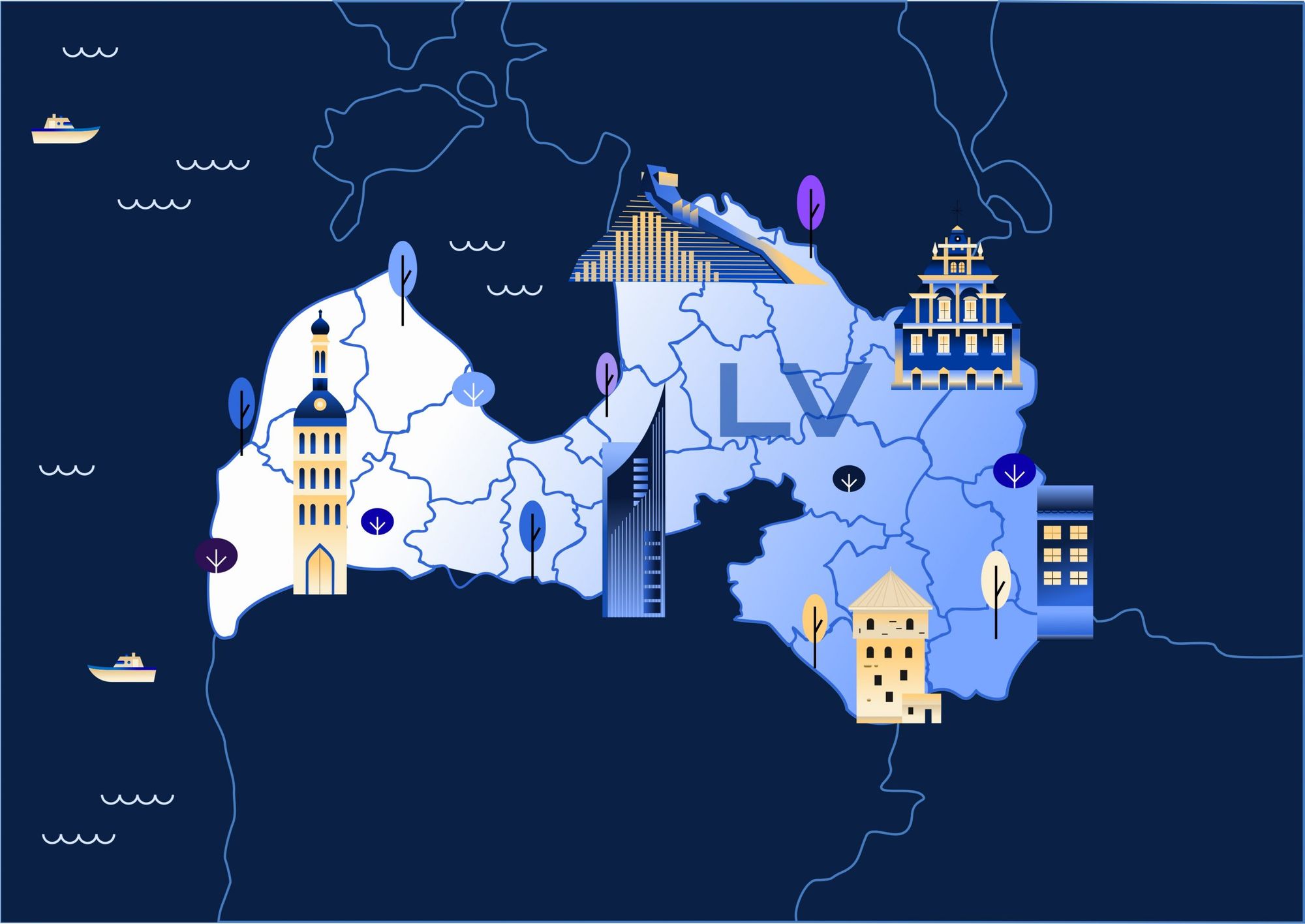More than thirty years have passed since the dissolution of the Soviet Union, which left an enormous economic and political void in Central and Eastern Europe. In this series of articles, we explore the responses of the countries of the region to the new circumstances: how they could adapt to capitalism, how successful their democratization was, and what lessons they can learn from each other. We discuss Latvia in Part II.
If you have already read the first article on Estonia, you are probably familiar with the Baltic states’ situation under their Soviet occupation, and you might remember what initial challenges these countries faced after their independence was restored. If you do not yet, we highly recommend reading it. But if you want to start with Latvia, here is a very brief crash course on the Baltic states’ history. Firstly, when the Soviet Union collapsed, the Baltic countries were in a more advantageous position than the other post-Soviet states since their area was the most developed region of the USSR. Secondly, the traditionally agricultural region was experiencing massive industrialization during the Soviet occupation. Thirdly, the region is multiethnic due to the massive influx of Russians during the Soviet era. Fourthly, because of the economic transformation, the production of the agricultural, industrial, and service sectors has declined sharply, with inflation reaching 1000% in all three Baltic states.
The Latvian economy experienced a particularly severe crisis during the economic transformation. The decline in the country’s GDP was 49% between 1990 and 1993. The new economic system required new economic regulations for liberalization and privatization, but the most pressing problem was currency depreciation, just like in Estonia. In contrast to their northern neighbor, the Latvians did not introduce a currency completely independent of the ruble. Their new currency was called rublis, and it was declared equal in value to the ruble. However, the rublis could not sufficiently displace the ruble, so in 1993 a new currency was introduced: the Latvian lats. The lats were pegged to the SDRs (special drawing rights), which are the foreign exchange reserve assets maintained by the IMF.
Privatization is a prerequisite for a market economy, and it is also essential from a legal and moral perspective. The Latvians have chosen another path than the Estonians. They did not want to start by bringing in foreign capital. Only those people were allowed to buy state-owned properties or businesses who had lived in the country for at least 16 years. And they could do it only with cash. But these restrictions were abolished in 1992. Land and property were privatized without major difficulties, just as in other countries. Small companies also quickly went into private hands by the allocation of vouchers. The problems started when those large companies’ turn came, which were closely tied to the state, and thus, they could not be returned to their original owner. Nevertheless, by 1998, two-thirds of the GDP had come from the private sector. At first, this may sound like a success, but it met public outcry since a small elite group gained most of the privatized wealth.

From the beginning of the country’s independence, it was clear that Latvia wanted to join the Western economic system. They quickly introduced legislation that became the backbone of democracy and the rule of law. Latvia joined the IMF in 1992, and they started to negotiate with the World Trade Organization and the European Union as well. In 1994 Latvia and the EU signed a free trade agreement, and in 1995 the county applied for accession to the EU. By 2000, 65% of the Latvian export were going to the EU, signaling the increasingly strong economic ties. Between 1999 and 2003, a large-scale regulatory and legislative reform took place, which changed thousands of rules, bringing the country even more in line with EU policies. Latvia finally joined the European Union in 2004.
The massive influx of Russians and the deportation of the local communities caused severe problems in all Baltic states after the countries restored their independence. Still, Latvia’s plight was the worst. According to the 1989 census, 52% of the country’s population identified as Latvian, and 38,5% as Russian. Most citizens felt that they were the minority and experienced the psychological disadvantages of this perception. In the 19-44 age group, which class consists most of the working-age population, the percentage of Latvians was below 50%. In the bigger cities, the majority was not Latvian either. In Riga, the capital, only one-third of the residents identified as Latvian, while in the second-largest city, Daugavpils, only 14% of them. The ethnic diversity caused linguistic inconveniences. 70% of the population spoke Russian, and only 18% of non-Latvians spoke Latvian. Thus, according to the findings, in 1989, 83% of Latvians preferred to initiate conversations with strangers in Russian.
Latvians still felt that they were a minority in their own country, while the Russian community became an actual minority overnight. During the occupation, Russians were the majority in the Soviet Union, and all at once, the legitimate demand from the Latvians came that they should assimilate.
It is difficult to speak objectively of nationalism in the modern, extremely polarized political environment of the West since, in most cases, nationalism is either celebrated or condemned. Nonetheless, for Latvian independence, nation-building was inevitable. National identity was necessary to create an integrative sovereign Latvian state, but there are some drawbacks of nationalism, such as the destructive far-right groups. Nonetheless, modern Latvia could not have been born without a strong national identity. In this context, it is not surprising that in politics, the 1990s were dominated by the center-right and the overrepresentation of ethnic Latvians.
Today, the percentage of ethnic Latvians in the country is increasing, but the country’s population is sharply declining. Since 2000, Latvia’s population has fallen by around half a million. In 2021, 1.89 million people lived in the country, less than in 1897, when the country’s population was 1.93 million. Some estimates suggest that Latvia’s population could shrink to 1.25 million by 2050.
What might be the lesson of the 30 years which passed since Latvian independence was restored? There is no such thing as universal truth. While elsewhere, nationalism is considered loathsome and obsolete, it was unavoidable to stabilize the state and the people’s national identity in Latvia. Another main takeaway is that no Garden of Eden exists where a nation can flourish eternally. The restoration of independence has not solved all the country’s problems, and the demographic crisis is disadvantageous for the economy. Through privatization, Latvia became a market economy, and the country integrated into the international economic system. They are IMF, WTO, and EU members, but developing is still a challenging mission for Latvia. If there is no problem to solve, there is no progress.
We will explore Lithuania’s contemporary history in the next part.
The first part of the series is available here.

You’ve never seen the Buda Castle District like this!—Budapest100 is coming at the weekend

People are ready for the more honest depiction of the female body | Interview with Marylou Faure










